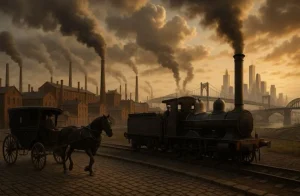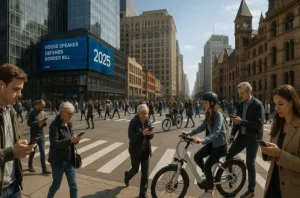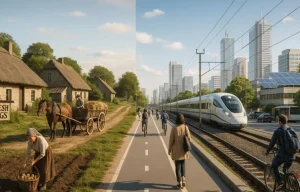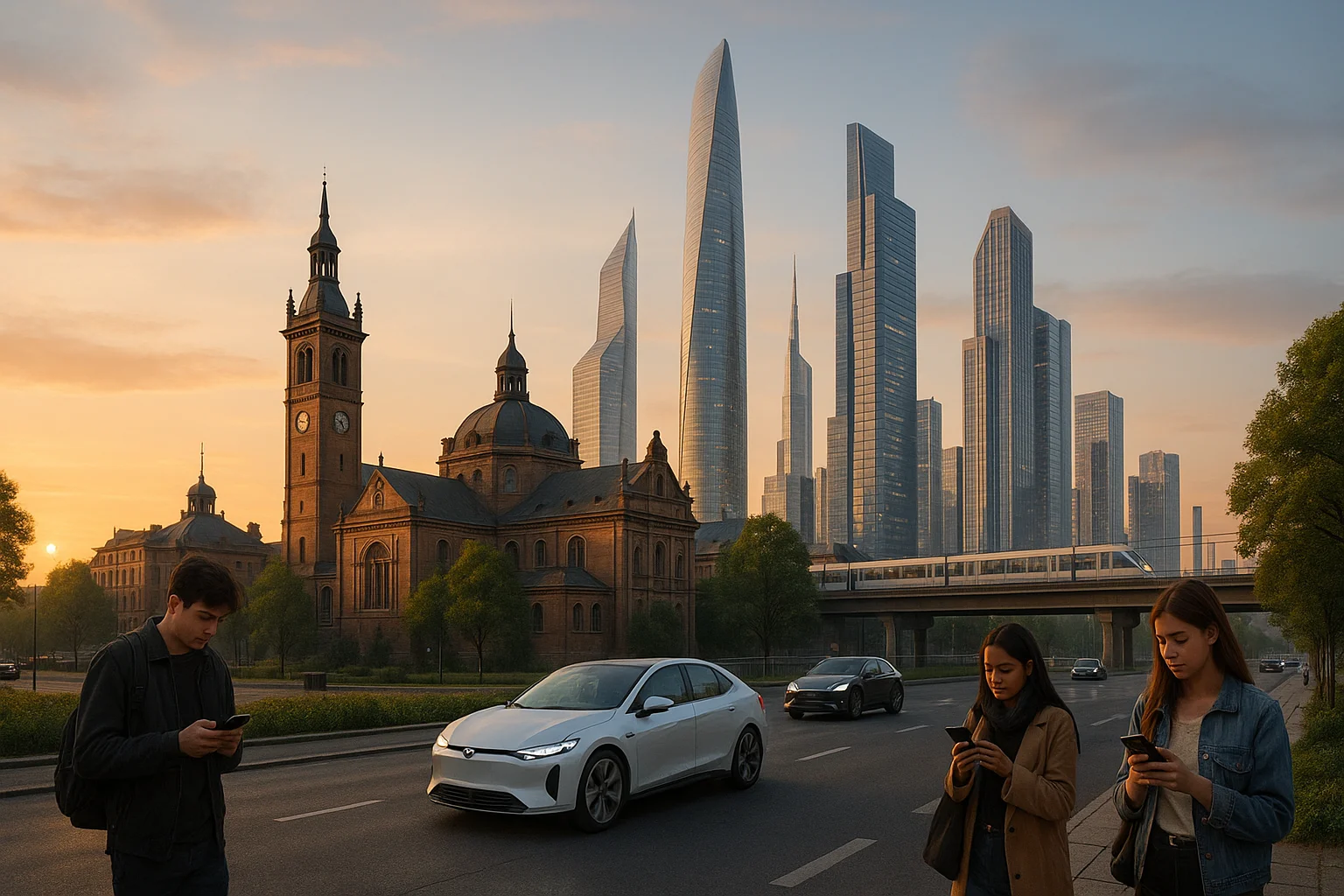Growing up, many of us remember learning about the Ancient, Medieval, and Renaissance periods. Each era carried its unique mark in history.
But when it comes to today, the world of AI, climate change, global connectivity, and rapid innovation, what exactly do we call this time? What era are we in now?
It’s a question more relevant than ever in 2025. We live in a world where history is unfolding at lightning speed, technology is evolving faster than our textbooks can update, and cultural shifts happen overnight through social media.
Pinpointing the exact “era” we are living in depends on your perspective: historical, scientific, cultural, or even royal. This blog will take you on a journey across each of these views to help you understand what era we are in, and why it matters.
How Did We Transition into the Modern Era?

The concept of “modern” has evolved over centuries. Traditionally, the term “Modern Era” began around the year 1500. Historians have long debated when the transition from the medieval world to the modern world actually took place. Several key turning points contributed to this transformation.
From Middle Ages to the Age of Discovery
The fall of Constantinople in 1453 signalled the end of the Byzantine Empire and the rise of new global powers. This event also marked the shift in trade routes and exploration.
Around the same time, Gutenberg’s printing press in the 1450s revolutionised how knowledge was shared. With the spread of printed materials, ideas like the Reformation in 1517 gained momentum quickly.
Rise of Humanism and Enlightenment
As Europe entered the Renaissance and Enlightenment periods, there was a growing emphasis on human potential, reason, and scientific thought.
Thinkers like Galileo, Newton, and Descartes shaped a worldview rooted in evidence and discovery. This intellectual shift is often seen as a dividing line between medieval thinking and the modern mindset.
Industrial and Political Revolutions
The Industrial Revolution, starting in the 18th century, was another massive catalyst. Mechanisation changed how people lived, worked, and communicated. Simultaneously, political revolutions such as the American and French revolutions began pushing society toward democracy and human rights.
By the 19th century, historians largely agreed that the world had moved into the Modern Era, a time of rapid technological and social development that continues into today.
What Defines the Contemporary Era in Human History?
The Contemporary Period is considered the most recent and ongoing phase of the Modern Era. While the Modern Era started around the 19th century, the Contemporary Era is often pinpointed to the aftermath of World War II, from 1945 to the present.
Key Characteristics of the Contemporary Era
- Technological acceleration: From television to the internet and now AI, innovation has become constant and exponential.
- Globalisation: Trade, travel, and communication have created a globally connected society.
- Social movements: Civil rights, environmentalism, feminism, and other global movements have redefined norms and laws.
- Geopolitical shifts: The Cold War, decolonisation, and new political alliances have reshaped the world map.
The Contemporary Era is unique in that it’s marked by the convergence of these transformations across all aspects of life, political, cultural, scientific, and digital.
What Era Are We In Now?

As of 2025, we are living in what is widely referred to as the Contemporary Era, a part of the broader Modern Era. However, the era we are in can be described using several lenses.
Multiple Names for Our Current Era
| Perspective | Name of the Era | Description |
|---|---|---|
| Historical | Contemporary or Modern Era | Begins post-WWII, marked by technology and global change |
| Geological | Holocene or proposed Anthropocene | Focused on human impact on Earth |
| Royal (UK) | Carolean Era | Named after King Charles III |
| Pop Culture | Digital Age, Social Media Era | Emphasises tech influence on daily life |
| Astrological | Age of Aquarius | Based on celestial positions and astrological shifts |
The term used often depends on context. A geologist might refer to the Holocene or Anthropocene, while a historian would say Modern or Contemporary. In the UK, you might hear about the Carolean Era due to the reign of King Charles III.
Is the Anthropocene the New Geological Epoch?
Geologists traditionally define time using epochs, periods, and eras. Currently, we are in the Holocene Epoch, which began around 11,700 years ago following the last Ice Age. But some scientists propose that we are now in a new epoch, the Anthropocene.
Why the Shift to Anthropocene?
The Anthropocene suggests that human activity has become the dominant influence on Earth’s environment and climate. This includes:
- Global plastic pollution
- Deforestation
- Rising greenhouse gas emissions
- Nuclear radiation traces
- Mass extinction of species
Some argue that this epoch began around the mid-20th century, coinciding with the post-WWII economic boom, widespread industrialisation, and the introduction of technologies like television and commercial aviation.
Though not yet officially recognised by the International Commission on Stratigraphy, the term is gaining popularity and academic support.
How Do Historians and Scientists Name Eras Differently?
The way we label eras depends greatly on the lens through which time is observed. Historians often rely on cultural and political events, whereas scientists look at Earth’s geological and biological changes.
Comparative Table of Era Classifications
| Field | Timeframe | Era Name | Basis of Classification |
|---|---|---|---|
| History | Post-1945 | Contemporary Era | Global politics, wars, and social movements |
| Geology | 11,700 years ago–present | Holocene Epoch | Climatic stability, agriculture, and civilisation |
| Science | 66 million years ago–now | Cenozoic Era | Dominance of mammals |
| Royal UK | 2022–present | Carolean Era | Reign of King Charles III |
Understanding this divergence helps explain why there’s no single answer to “what era are we in.” Instead, each field offers valuable insight into how humanity views and measures time.
What Makes the Modern Age Unique Compared to the Past?

While previous eras had transformative events, the modern age stands out for the pace and scale of change.
Key Distinctions of the Modern Age
- Speed of innovation: Technologies like AI and smartphones developed in just decades.
- Global interconnectedness: Events in one country now influence economies and societies across continents instantly.
- Rise of information: Knowledge is no longer limited to institutions; it’s accessible to almost anyone with an internet connection.
- Democratisation of voice: Social media has given individuals a platform to influence politics, trends, and news.
The convergence of these factors creates a truly global society, one where individuals play an increasingly central role in shaping the world.
How Has Technology Defined the Digital and AI Eras?
Technology is arguably the strongest defining feature of our current era. From the birth of the internet to the mainstream use of Artificial Intelligence, the Digital Age has transformed every part of life.
Core Technologies Shaping the Era
- Internet and smartphones: Enabled instant global communication.
- Artificial Intelligence: Automated industries, changed content creation, and revolutionised data processing.
- Social media: Redefined identity, politics, and relationships.
- Digital economy: E-commerce, digital currencies, and gig work are now integral to the global economy.
AI, in particular, is creating a new sub-era, the AI Era, where machine learning influences decision-making, healthcare, creativity, and even legal systems.
Are We Entering a New Age of Innovation and Exploration?
While we still reside in the Contemporary Era, several new labels are emerging that point to significant shifts ahead.
Emerging Proposals for Future Eras
| Proposed Era | Key Features |
|---|---|
| AI Revolution | Integration of AI in daily life, work, and governance |
| Climate Change Era | Focus on sustainability, green tech, and policy reform |
| Post-Pandemic World | Remote work, hybrid lifestyles, health consciousness |
| Space Age 2.0 | Renewed interest in space travel, Mars missions, private space industry |
These labels are not official but reflect the transitions humanity is undergoing in real time.
What Era Are We In from a Cultural and Generational Perspective?

In popular culture and society, eras are often defined not by world events or scientific milestones, but by how generations live, work, and think.
Generations That Define Our Time
| Generation | Birth Years | Characteristics |
|---|---|---|
| Millennials | 1981–1996 | Tech-savvy, value-driven, globally aware |
| Gen Z | 1997–2012 | Digital natives, socially conscious |
| Gen Alpha | 2013–2024 | Growing up with AI, smart devices |
| Gen Beta | 2025–2039 | Just beginning, expected to be deeply embedded in digital and AI systems |
These social markers show how culture shifts shape how we define time. From the music we consume to the jobs we do, each generation brings a new energy to the current era.
Can the Royal Era Define the UK’s Historical Context?
In the United Kingdom, the naming of royal eras reflects the reign of the current monarch. As of 2025, we are in the Carolean Era, named after King Charles III. The term originates from “Carolus”, the Latin form of Charles.
Royal Naming Conventions
- Elizabethan Era: 1952–2022, Queen Elizabeth II
- Carolean Era: 2022–present, King Charles III
These royal eras do not necessarily align with global timelines or scientific epochs, but they are culturally significant, especially in the UK. They influence literature, fashion, architecture, and national identity.
Real-Time Example: The Age of Artificial Intelligence (AI Era)
The emergence of artificial intelligence has arguably introduced a new turning point in human civilisation. In 2025, AI is no longer a niche technology. It is:
- Writing our emails
- Powering self-driving cars
- Diagnosing medical conditions
- Generating creative content
- Analysing big data for governments and businesses
AI tools like language models, machine vision, and robotic process automation are now common in homes, hospitals, factories, and creative industries. Many experts compare the rise of AI to the Industrial Revolution, a shift so massive that it could redefine the way human society operates.
This is not just a tech trend. It’s a cultural transformation. In real time, we are witnessing the evolution of a new societal structure, marked by machines learning and adapting faster than any previous invention.
What Might the Future Era Be Called?

Looking ahead, scholars and futurists speculate that we might soon label the coming decades with entirely new terms. Some potential era names include:
- Technocene: Highlighting technology as the key force shaping life.
- Post-Digital Era: Where digital is fully integrated, and the next frontier (like biotech or quantum computing) takes over.
- Sustainability Age: Defined by environmental priorities and a rebalancing of human-nature relationships.
Whether these names become official or remain conceptual, they reflect a universal truth, we are always moving into new chapters of human existence.
Conclusion
So, what era are we in now? The answer isn’t as straightforward as ticking a box. We are in the Contemporary Era, a time of technological revolution, cultural shifts, and scientific awakening.
From AI to climate change, from the Carolean monarchy to social media trends, we are navigating multiple timelines all at once.
Understanding what we call our era is more than a historical footnote. It’s a mirror of our values, achievements, and priorities.
As we move forward, one thing is certain, we are living in an age of immense transformation. And that, in itself, makes our time in history truly remarkable.
FAQs
What does the term Contemporary Era mean?
The Contemporary Era refers to the period from the end of World War II to the present day, marked by rapid technological, social, and political changes.
Are we still in the Modern Era?
Yes, the Modern Era includes the Contemporary Era. While the Modern Era began around the 19th century, the Contemporary Era is its most current phase.
What is the Anthropocene Epoch?
The Anthropocene is a proposed geological epoch highlighting human impact on Earth’s environment, especially since the mid-20th century.
What is the Carolean Era?
The Carolean Era is the current royal period in the UK, named after King Charles III, who ascended to the throne in 2022.
Is the Age of AI an official era?
Not officially, but it is a widely used cultural term to describe how artificial intelligence is transforming our world.
What generation comes after Gen Alpha?
Generation Beta is the next cohort, covering children born from 2025 to 2039.
What makes our current era different from the past?
Our era is defined by rapid innovation, global connectivity, and the integration of technology into nearly every aspect of daily life.

Leave a Reply